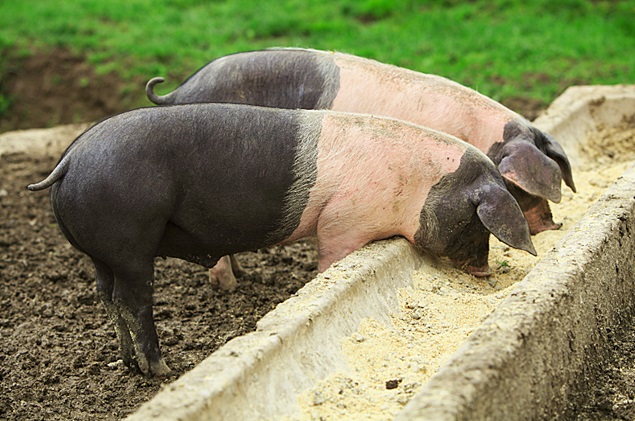
The stress hormones can be measured through blood tests, but a non-invasive and economical approach is to analyze how much stress hormone is "locked" in pig hair, reveals PigProgress.
A new window
Pigs that are generally stress-resistant are also more resilient to diseases and demonstrate overall better performance. This fact is already being utilized to some extent in pig rearing programs and other types of animal husbandry.
A new window into stress resilience in pigs – through hair analysis – will lead to a greater and more precise reproduction regarding this fact in the future.
Stress for pigs can stem from changes in their environment, transportation, inadequate conditions in the barn or truck, uncertainty regarding feeding programs, and many others. And because they are kept in groups for a part of their lives, pigs also face social stress.
Stress Indicators
Stress indicators are grouped into 3 main categories. These are: causal indicators (certain behaviors, such as tail biting, type and number of social interactions), biological response indicators (for example, the level of stress hormones in the blood), and consequence indicators (overall performance).
As mentioned, stress hormones can be measured through blood tests, but a non-invasive and economical approach is to cut and analyze how much stress hormone is "locked" in pig hair.
Research in this method of stress measurement was initiated a few years ago by Dr. Jack Dekkers from Iowa State University and his colleagues there, as well as in Canada, at the Universities of Saskatchewan and Alberta, and at the Centre de développement du porc in Quebec.
Hair tells the story
Hair sampling analysis is not only non-invasive, but Dekkers recently explained that it tells a different story from blood analysis for stress hormone levels.
That is, as hair grows, some stress hormones deposit into it and, unlike stress hormone levels in the blood, which fluctuate all the time, they accumulate permanently. Therefore, hair grown over a certain period will reflect the stress response over the entire period.
The study began in 2021. Research pigs are located in Quebec, and stress hormones from hair samples from these pigs are measured at the University of Saskatchewan. The data from that work are analyzed there and at Dekkers' lab at Iowa State.
Response to typical stressful situations
In addition to the stress response due to disease introduction, researchers are interested in how pigs respond to typical stressful situations, such as weaning, transportation, and placement in a new group where a new social order is formed.
Therefore, hair samples have been taken at different times in the lives of the study pigs, which now number approximately 1000 animals.
Hormones and DNA
Researchers already know that pigs with a low ratio of stress hormones cortisol to DHEA in hair are less stressed. Which genetic lines have more stress resistance can inform breeding programs, but research goes further into investigating specific genetic bases that result in greater or lesser resistance.
Furthermore, Dr. Yolande Seddon, who leads the analysis at the University of Sask and also serves as an NSERC Industrial Research Chair in Swine Welfare for Canada, says another long-term goal of the research team is to use this analysis method to evaluate animal welfare in current pig rearing systems.
She adds that since hair can be easily stored, samples can also be analyzed in future studies as technology evolves. (Photo: Dreamstime)





